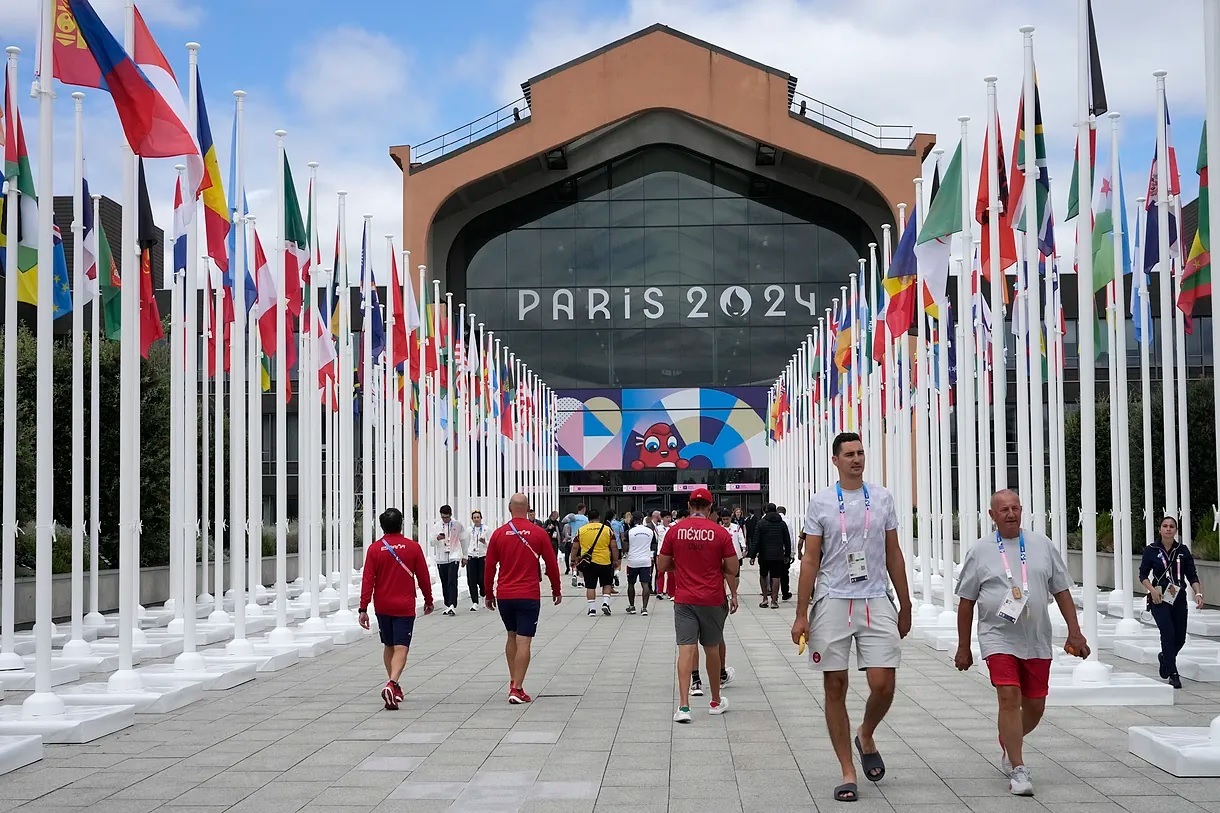A stroll through the Olympic Village two days before the start of the Games is a wander of athletes eager for the action to begin. A Babel of gifted individuals, a city within a city, 14,000 people (athletes, coaches, and other staff) ready to live a unique experience and, if possible, win a medal. In Saint Denis, not far from the stadium, stands an architectural walkway with 82 buildings and 3,000 apartments. All possible comforts for the protagonists of the next two weeks and also a good handful of curiosities.
Around the building occupied by the Spanish delegation, each balcony adorned with a Spanish flag, adjacent to the Italian delegation, a group of Samoan athletes breaks the tranquility with a powerful speaker playing reggae music. The Village fulfills stereotypes. In the Australian block, you are greeted by a kangaroo and a koala. A little further, Teddy Riner, possibly the greatest living legend of French sports - three Olympic golds in judo, 11-time world champion - patiently waits in line for the typical photo with the Olympic rings. It is the busiest and most Instagrammed corner.
In the Village, there is a supermarket (2,000 square meters of Carrefour), waste disposal service, bike rental, bus line, laundry, tourist information center, luggage concierge, a bank, postal service, a small hospital, a Fnac, a beauty salon with hairdressing and manicure and pedicure services, a couple of recreational game areas including darts, video games, and even a foosball table... There is even a corner for smokers. Water fountains are available in every corner and many trees. In the Paris Olympic Village, of course, there is a 3,000 square meter gym with over 300 machines and an overwhelming restaurant.
Building of the Spanish delegation.Chema MoyaEFE
For meals, athletes have four gastronomic options prepared by three prestigious chefs (French, international, African and Caribbean, and Asian) and 3,262 seats. Over 500 recipes non-stop, as the restaurant is open 24 hours. And, for the first time, they eat on porcelain plates and non-disposable cutlery.
In addition to all these services, there are peculiarities. An outdoor piano for those who want to play, a corner where tai chi classes are taught... And several petanque courts, a very French sport.
And the novelties. The main one, the breastfeeding room and daycare. An initiative that the IOC took note of after the complaints of Ona Carbonell at the last Tokyo Games.
Athletes at a vending machine in the Olympic Village.Chema MoyaEFE
But the star product of the Village is the beds, with a motto on the headboard: "Dream of your feats of tomorrow." Because, as it happened in Tokyo, their bed frames are made of cardboard. Also designed by the Japanese brand Airweave, they consist of three modules totaling 190 centimeters - how will Wembanyama do it? - and are customized for each athlete. For this, a prior scan of their physique is done. All for rest: the mattresses are made of a striking washable plastic.
The double rooms - there are also larger apartments - are 12 square meters, have no kitchen, and are minimalist: white walls and parquet floors. They do not have air conditioning but have fans. There is a coat rack, a reading lamp, and a bedside table. No luxuries.
It is hard to imagine anything missing for the athletes in the Village, an impressive space whose investment was almost 1.5 billion euros and which, after the Paralympic Games, will be used for family homes and student housing.
